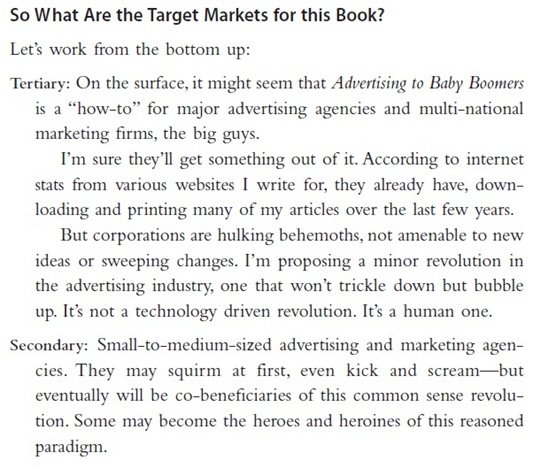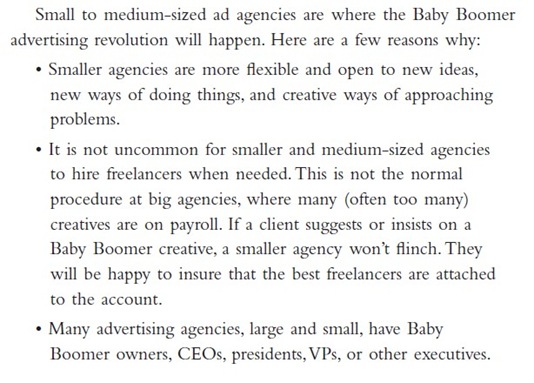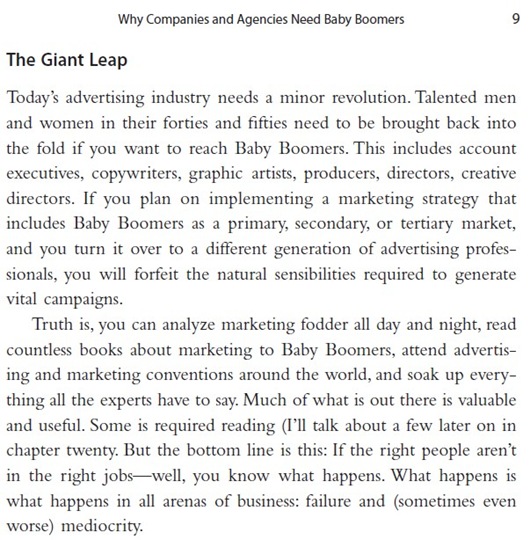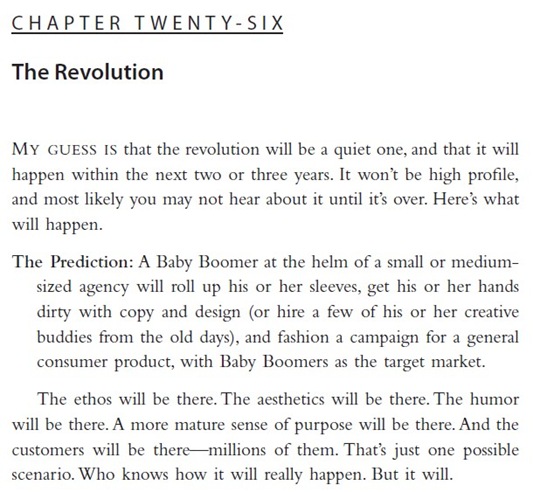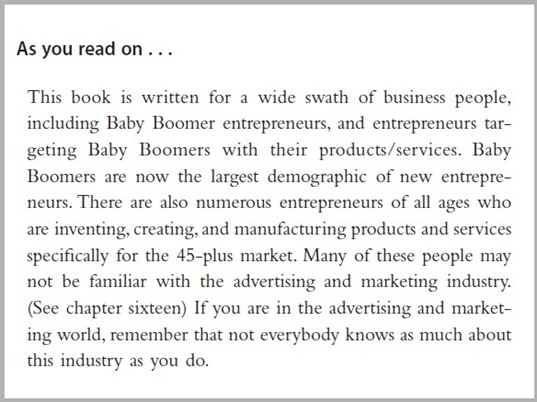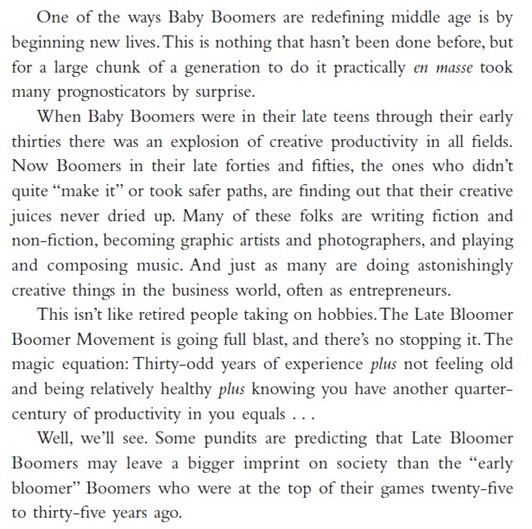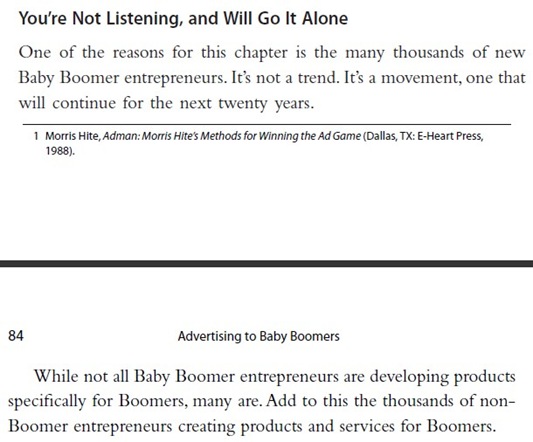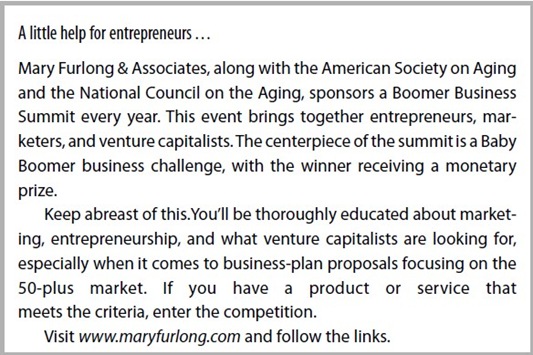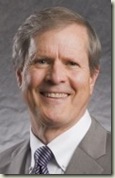Another déjà vu …
For me, the strangest episodes are happening while reading news articles about Baby Boomers and realizing that I’ve read versions of them all before – in my book and blog.
And they’ve given me excuses to have tongue-in-cheek fun with my alter-ego NostraChuckus. But recently it’s been spooky. I’m starting to believe my own goofy hype – hype I made up myself. (Or maybe I’m still having tongue-in-cheek fun ...)
A recent piece in MediaPost:
Maybe Peter Pan Should Move To Madison Avenue
… Nationwide research by AARP shows that the majority of consumers over 50 feels that advertising and marketing either portrays them negatively or ignores them altogether.
Why? Because it's being created by people at least 20 years younger.
Hmmm. All points made sound suspiciously like my online and trade mag articles, my blog, my consulting, a big chunk of my presentation when speaking. Since 2003.
I’m happy to see all this. Maybe even proud. Because NostraChuckus predicted it all – including the emergence of small-to-medium sized ad agencies staffed with folks who understand that ‘the best advertising is done by people who advertise to themselves’ …
I’ve also yelled it over Led Zeppelin. (audio download)
 Related posts here? Every third one, probably. (And at last count, there are 481 of’em.)
Related posts here? Every third one, probably. (And at last count, there are 481 of’em.)
A review of Advertising to Baby Boomers from 2005 – and two snippets:
![]()
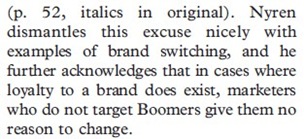
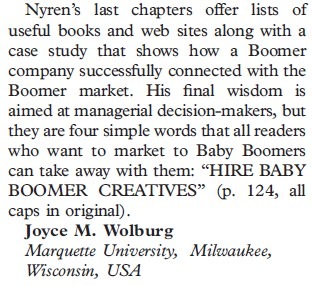
From the book:
 I guess NostraChuckus is scratching his head because in this age of digital ephemera, where things zoom by, just as quickly zoom into oblivion, are forgotten, or even worse, never seen, when these same things zoom by again and again and again, they’re all, all of a sudden, brand new.
I guess NostraChuckus is scratching his head because in this age of digital ephemera, where things zoom by, just as quickly zoom into oblivion, are forgotten, or even worse, never seen, when these same things zoom by again and again and again, they’re all, all of a sudden, brand new.
—
Dick Stroud, another brilliant seer of simple common sense, is likewise scratching his head – but for different reasons.
_
Update 7/01/09: Memed again.

